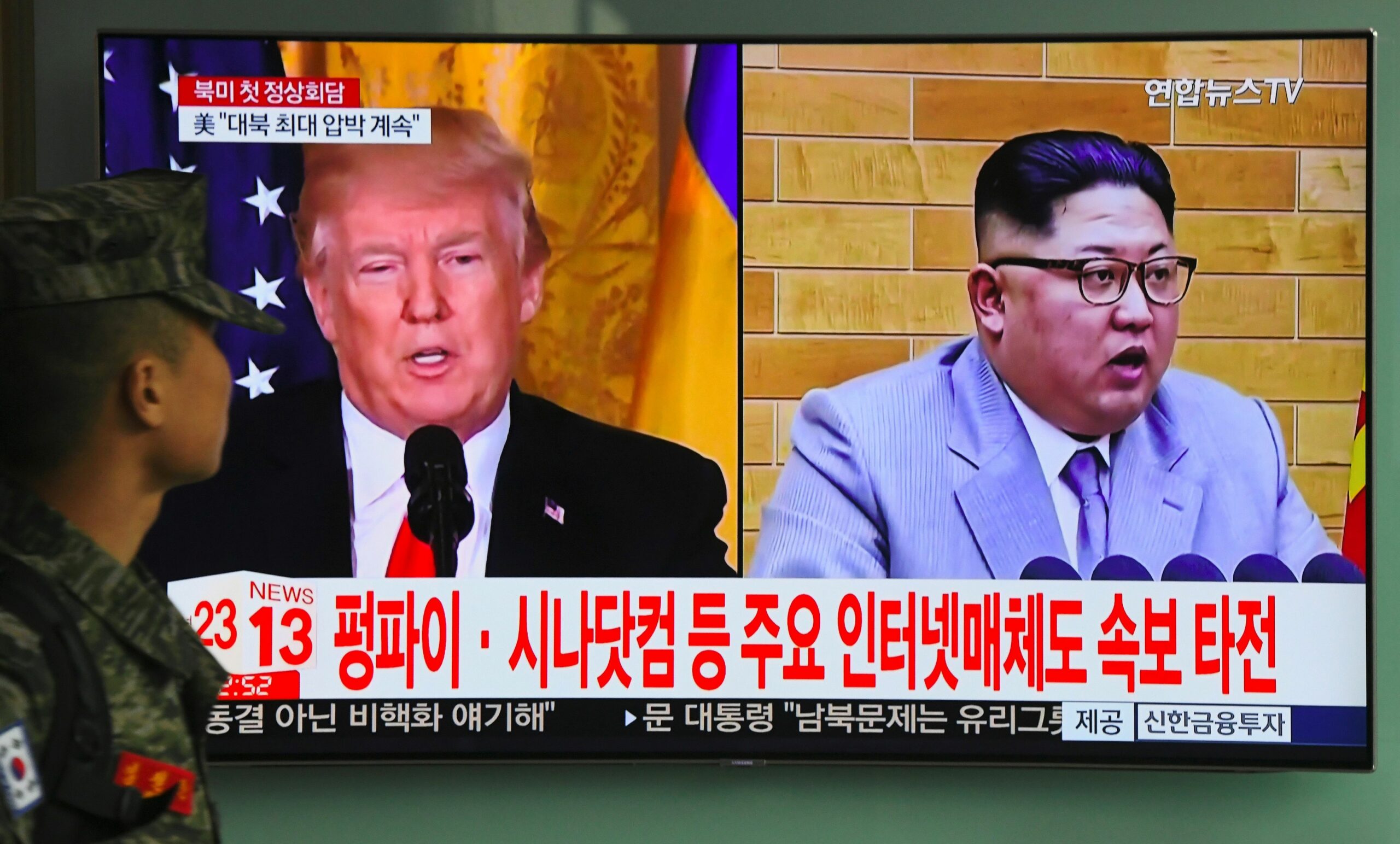A summit meeting between the leaders of North Korea and South Korea on 27 April produced several symbolic moments and a commitment to work towards 'denuclearisation'. Significantly, the meeting between Kim Jong-un and Moon Jae-in has also laid the groundwork for talks between President Trump in May or June.
The summit meetings themselves are positive for stability in the near term at least – but we still think that the prospects for substantive progress in the coming months are negative. Despite the North’s supposed readiness to discuss denuclearisation with Washington, a lack of agreement between the US and Pyongyang over the definition of that term means that beyond the Kim-Trump meeting the stability outlook is uncertain.
An unchanged strategy
The opacity of the North Korean regime means it is impossible to say with certainty what is behind Pyongyang’s push for engagement in 2018. It is at least credible that multiple issues are at play, including the North looking to ‘decouple’ the US and its allies, or because Chinese-backed sanctions are starting to bite. We think that the underlying rationale reflects North Korea’s longstanding strategic calculus: nuclear weapons guarantee regime security, but their development also gives the regime leverage in international talks on security intelligence and sanctions issues.
From what the North has said it believes, or is at least trying to make others believe, is that it has a functioning nuclear deterrent. After the last North Korean ballistic missile test in late November, Kim Jong-un said that the North has ‘finally realised the great historic cause of completing the state nuclear force’. We assessed at the time that this might signal a willingness to talk – although the timeline for engagement has been considerably shorter than anticipated.
We are sceptical that within months of this proclamation, there has been a substantive shift in the North’s position on its nuclear weapons. This is not least as they appear to have helped secure a symbolic meeting of equals with the US president, with Pyongyang giving very little in return. So far, there appear to be few logical narratives to explain why the North would be willing to ‘denuclearise’ as Trump defined it on 24 April, with the North ‘getting rid of their nukes’ but no suggestion of how it would benefit.
Rather, the North has remained fairly rhetorically consistent in how it defines denuclearisation and what it would expect in return – it is saying similar things now too during the heightened tensions of last summer. Essentially, it will consider giving up its own nuclear weapons if it were met with proportionate reciprocal measures from the US and South Korea. In all likelihood, these measures would include security guarantees for the North and a withdrawal of US forces from the South and the US nuclear umbrella.
Certainly, the way in which Kim has spoken of the purported nuclear arsenal as a ‘powerful treasured sword for defending peace… a firm guarantee by which our descendants can enjoy the most dignified and happiest life in the world was provided’ does not suggest it will be traded away cheaply.
The seeming willingness of both the South Korean and US presidents to hear what they want to hear at times may well improve the North’s bargaining power. For example, President Moon suggested in April that the North would no longer demand a withdrawal of US forces from the Korean Peninsula in exchange for denuclearisation. But this appears based on a lack of insistence on the matter from Pyongyang at that time, rather than an overt statement that it does not aspire to this goal.
Pyongyang’s ultimate demands became no clearer at the Kim-Moon summit, but they are almost certainly a price too high for the US and its regional allies to pay. However, if Seoul and Washington are willing to keep talking for now – that is, not walk away unless the US-North Korea summit is ‘fruitful’, as Trump has threatened – the North may see itself in a strong position to extract near-term benefits. As in past periods of international talks, the North will probably at least seek advances on sanctions relief and cross-border cooperation in return for relatively minor and reversible concessions.
Image: A South Korean soldier walks past a television screen showing pictures of US President Donald Trump and North Korean leader Kim Jong Un at a railway station in Seoul on 9 March 2018. Photo by Jung-Yeon-Je/AFP via Getty Images.
A summit meeting between the leaders of North Korea and South Korea on 27 April produced several symbolic moments and a commitment to work towards 'denuclearisation'. Significantly, the meeting between Kim Jong-un and Moon Jae-in has also laid the groundwork for talks between President Trump in May or June.







